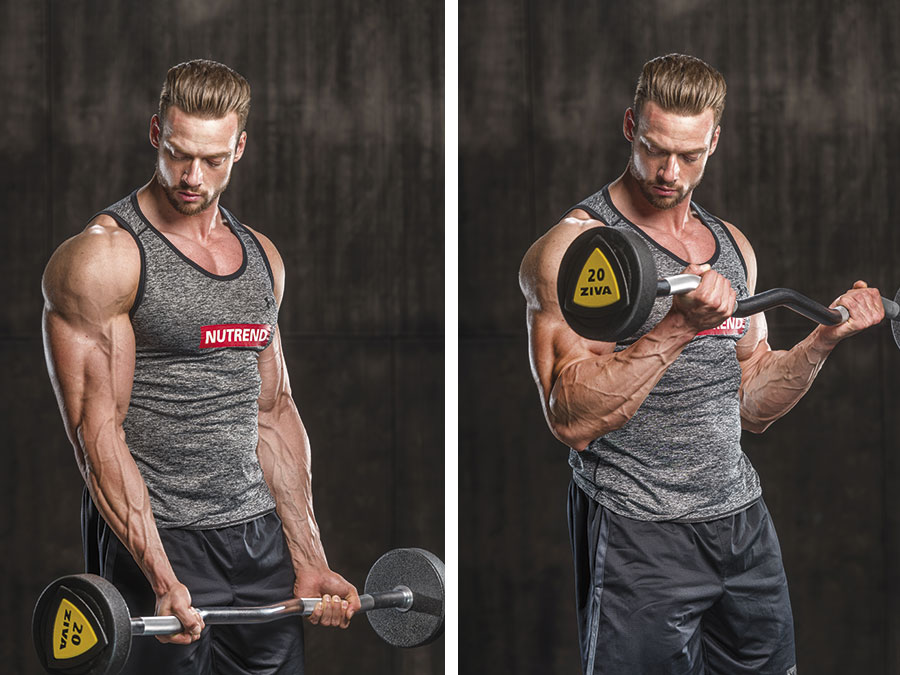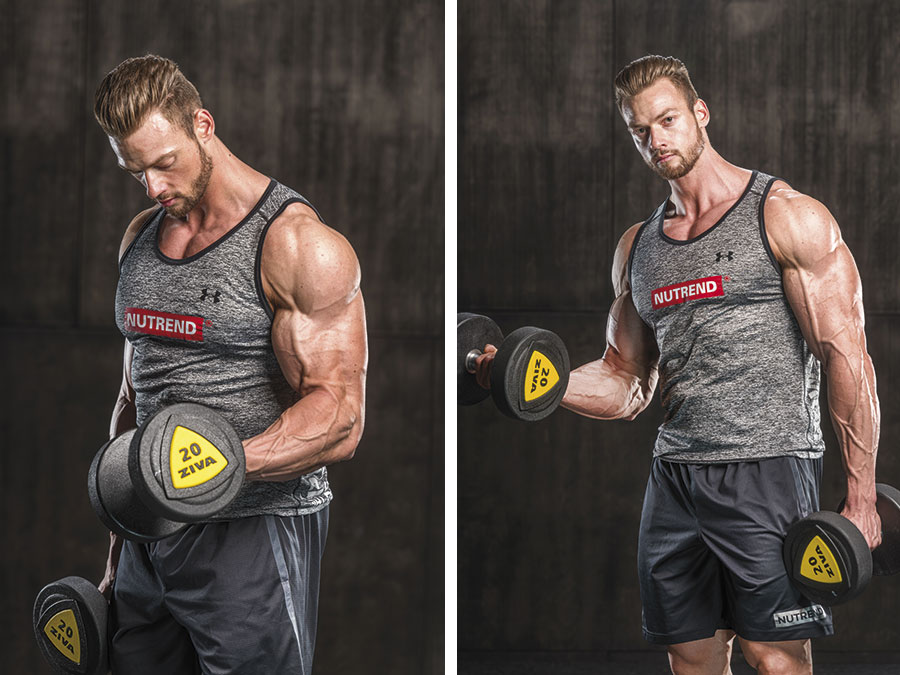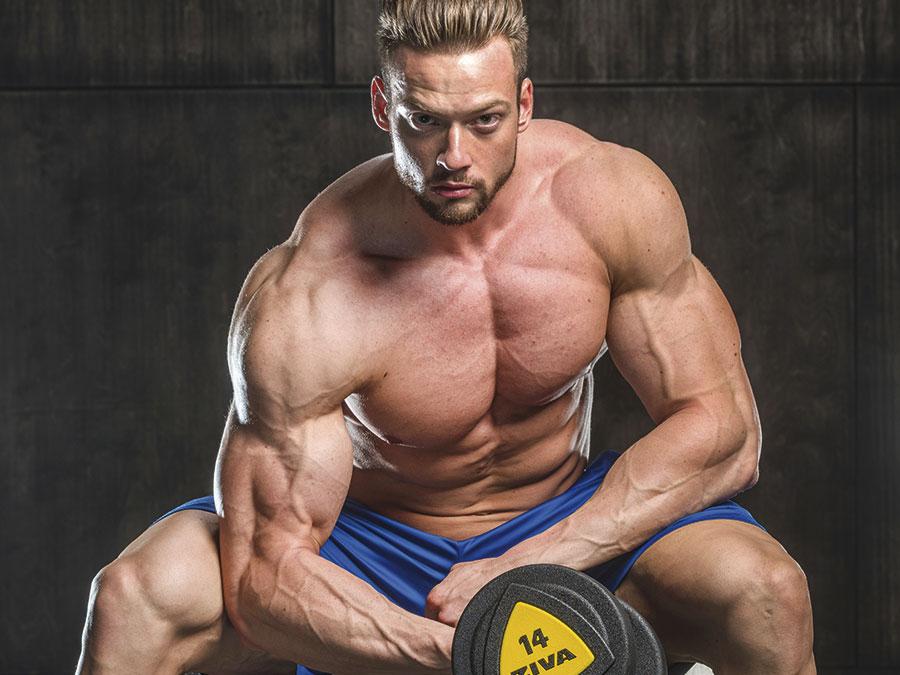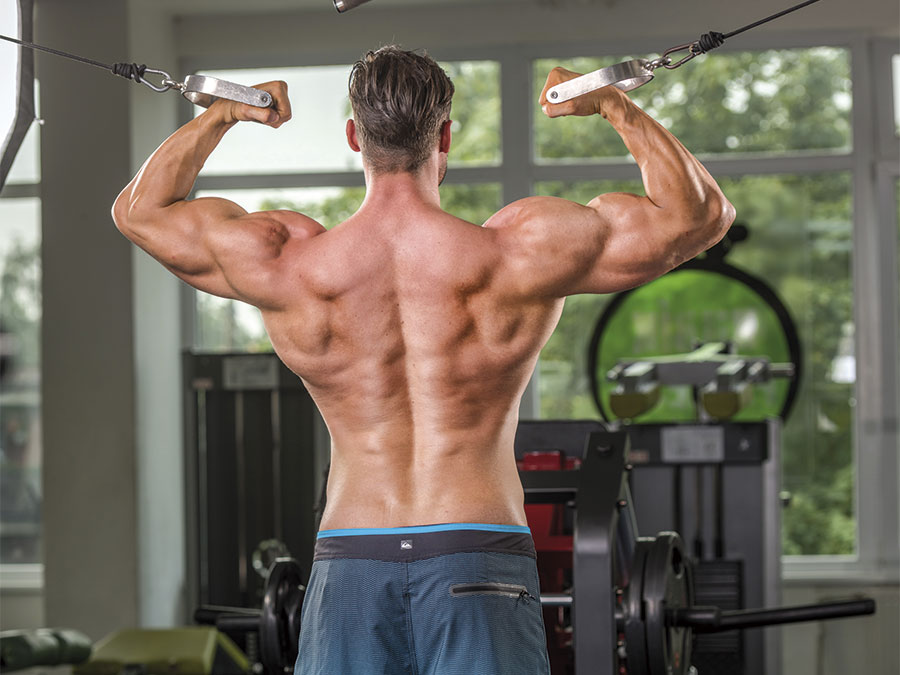All about CURLS
The curl is a classic movement in which you attach a straight bar, Z bar or V bar to a pulley or use a dumbbell, and work that showy biceps muscle whose size and peak attracts so much attention. If you bend the elbows and get a full range of motion from fully outstretched arms to the front of the body (or to the sides if you’re using dumbbells) to raising the arms slightly above parallel to the floor, you will get a complete contraction of that eye-catching muscle that everyone always wants to see. Remember, too, that the biceps also get trained for a range of other functional exercises, such as pull-ups (especially if you have a supinated grip), climbing or in various types of combat sport training. Sp let’s look in detail at the arm curl options. You are probably aware that you can use different types and lengths or bars, as well as dumbbells and even kettlebells, and apply different training principles to vary the intensity.
Biceps injuries often occur at the origin of the muscle and become chronic due to the fact that this muscle exits the bicipital groove and small tears and chafing accumulate. Rest, physiotherapy and good exercise form, along with increasing the number of reps to get better blood flow in the area, can heal an injury before a tear occurs.
Anatomy Of The Curl
Although the exercises vary, the basic movement remains the same. Begin by holding the bar in your hands, with your palms facing upwards (supinated grip) and your arms fully stretched out, about shoulder-width apart (if you are using dumbbells, the hands and arms should be to the sides). Raise the load until the weight approaches the upper chest. Lock your arms to your sides with your elbows pointing to the floor. This isolation exercise works the biceps, a two-headed muscle (long and short) that is responsible for bending the elbow and rotating the forearm. It is aided in these movements by the brachialis (located just below the biceps), which is better exercised using a neutral grip, for example with hammer curls, and the brachioradialis (situated on the outer forearm), which is best trained by curls with an inverted grip (pronated).
BAR CURLS

The classic biceps exercise. Load the bar with enough weight to do 8 to 12 repetitions, after a warm-up. For the working sets, approach muscle failure but don’t reach it until the final set, then on the final set you can even go beyond failure by including some forced repetitions (one, two or three, with the help of a training partner) or negative reps.
Only use the biceps for this exercise, and DON’T LET YOUR ELBOWS COME AWAY FROM YOUR SIDES otherwise the shoulders will get involved in the movement. You also have to keep your body upright. NEVER ARCH THE LOWER BACK as this takes the stress off the biceps and can cause pain or discomfort in the lumbar and sacral areas of the spine, which could lead to injury.
Returning the bar from the end position back to the starting point should be done in a controlled manner. Don’t just let it drop or bounce it back up against your body to start the movement for the next rep.
Bar curls have several variants, with the most important one being Z bar curls. The curvature of the Z bar is designed to suit your grip, which allows you to keep your wrists in a better anatomical position and (according to some) enables you to use a slightly heavier load without changing the dynamics of the exercise.
Some athletes also do curls with a straight bar or a Z bar in a seated position, supporting the load on their quads so they only perform the upper part of the movement, which enables them to really squeeze the strongest part of the muscle. It should go without saying that you must be very careful on the negative or eccentric part of the movement, and lower it in a controlled manner to avoid bouncing or rebounds.
DUMBBELL CURLS

The positioning for this exercise is different but the outcome is the same. Start the movement with your arms stretched out to the sides, holding the load with a neutral grip. From there, rotate the wrists as you raise the dumbbells. They should be in a supinated grip at the end of the movement.
During the descent, do the opposite, and once again the rotation of the wrists will hit the biceps and brachioradialis. Obviously, avoid swinging or using other parts of your body to create momentum or to move the weight.
You can also do variations of the exercise. the most important one is the alternate curl, in which you raise and lower one dumbbell then do the same with the other, or alternate the movement by raising one dumbbell as you lower the other, and vice versa. You can do this exercise in just the same way with kettlebells because in reality it is a rounded dumbbell with a handle at the top.
CONCENTRATION CURL

This is usually performed seated, with the elbow resting on the inside of the thigh and the dumbbell held with a supinated grip, close to the ground. Raise the load until it approaches shoulder height, controlling the up and down movements. You can use a little momentum to squeeze out a few more repetitions when you reach muscle failure. It is about using just enough momentum to make the weight move again when it gets stuck in order to enable you to complete the range of movement.
Then return to the starting point using a slow and controlled negative repetition.
PULLEY CURLS

PULLEY CURLS have different variants: they can be done standing, with a straight bar or a Z bar, in the same way that you would do a barbell curl, or you can stand in the middle of two cables and hold each handle with outstretched arms at shoulder height and bring the forearms level to the floor then contract the biceps and return in a controlled manner to the starting point. However you do them, these type of exercises should only be performed by advanced athletes.
